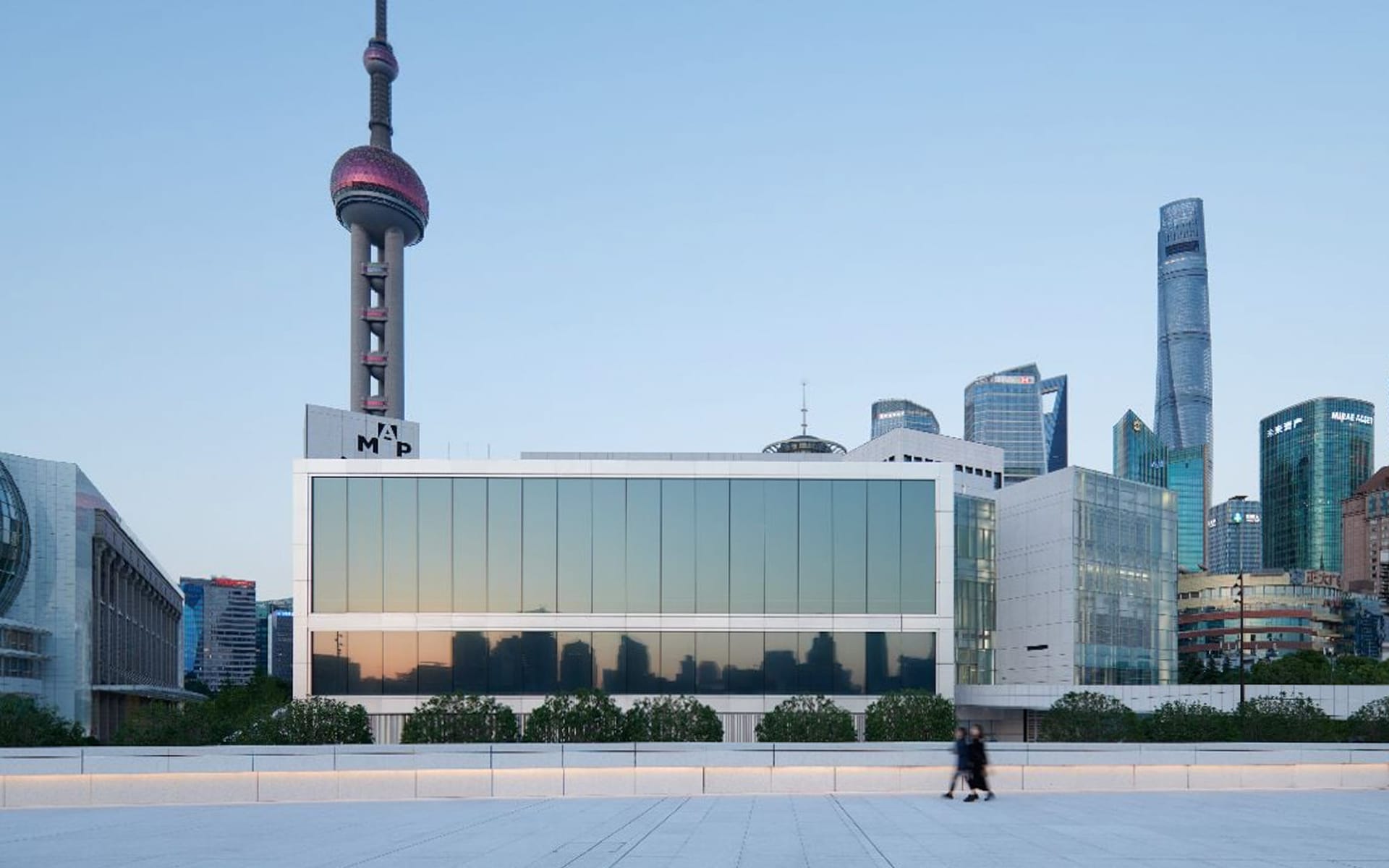Jean Nouvel’s New Museum in Shanghai Is a Minimalist Masterpiece
The granite-clad Museum of Art Pudong debuts with a special exhibition by Chinese artist Cai Guo Qiang

For his latest feat, famed French architect Jean Nouvel has conceived a minimalist masterpiece on the banks of Shanghai’s Huangpu River, in the popular Bund neighborhood. Recently opened to the public, the Museum of Art Pudong (MAP) adds heft to the Pritzker Prize–winning architect’s already remarkable portfolio, which includes the enormous Louvre Abu Dhabi, the vibrant Torre Glòries in Barcelona, and the National Museum of Qatar, modeled after the stunning desert rose crystal formations found in the region.
The project began after the architect’s Paris-based studio, Ateliers Jean Nouvel, won the 2016 competition run by the Chinese government, beating out other prestigious firms such as David Chipperfield Architects and SANAA. The nearly ten-acre waterfront site, which sits in the shadow of the city’s iconic Oriental Pearl Tower, had been left deliberately vacant for years pending the construction of a significant cultural institution.


And now, after some $200 million has been poured into development, the moment has finally arrived. Clad in gleaming white granite, the six-story structure eschews Nouvel’s trademark architectural flourishes, instead adhering to simple geometries with enormous reflective panes of glass. “I hope that the Pudong Art Museum is like a sculpture calmly integrated on the vast land,” Nouvel told Designboom. “When people look at it, don’t think it’s an independent building, but it is a continuation of the collocation of the land, scenery, and space sketches, naturally coherent together.”

Boasting more than 100,000 square feet of exhibition space across 13 galleries, the institution has plenty of breathing room for its slate of impressive inaugural shows. Among them is “Odyssey and Homecoming,” a transfixing exhibition from acclaimed Chinese artist Cai Guo Qiang that comprises 119 gunpowder paintings along with his first-ever work to use virtual reality. Guo Qiang will also debut a site-specific kinetic light installation based on ancient Mayan cosmology.


Other shows christening the space include “Light: Works from Tate’s Collection,” which is presented in conjunction with the U.K.’s Tate Britain and features more than 100 masterpieces by luminaries like Sir John Everett Millais, James Turrell, and Bridget Riley. And, in partnership with Spanish institution Fundació Joan Miró, MAP is hosting “Joan Miró: Women, Birds, Stars” that focuses on the eclectic practice of the famed Spanish painter.
There are also a pair of dining areas on-site, including an upscale rooftop venue with spellbinding views of the cityscape—the perfect place to unwind after a long day of soaking in all the art.
